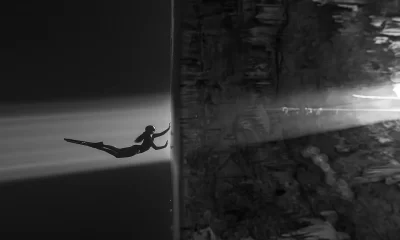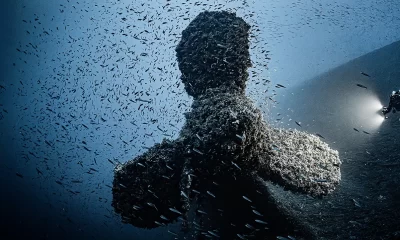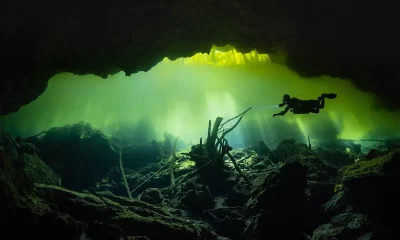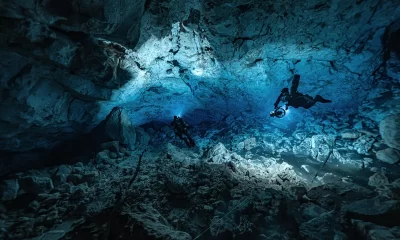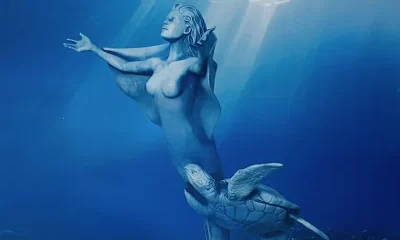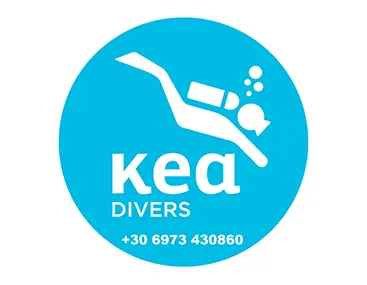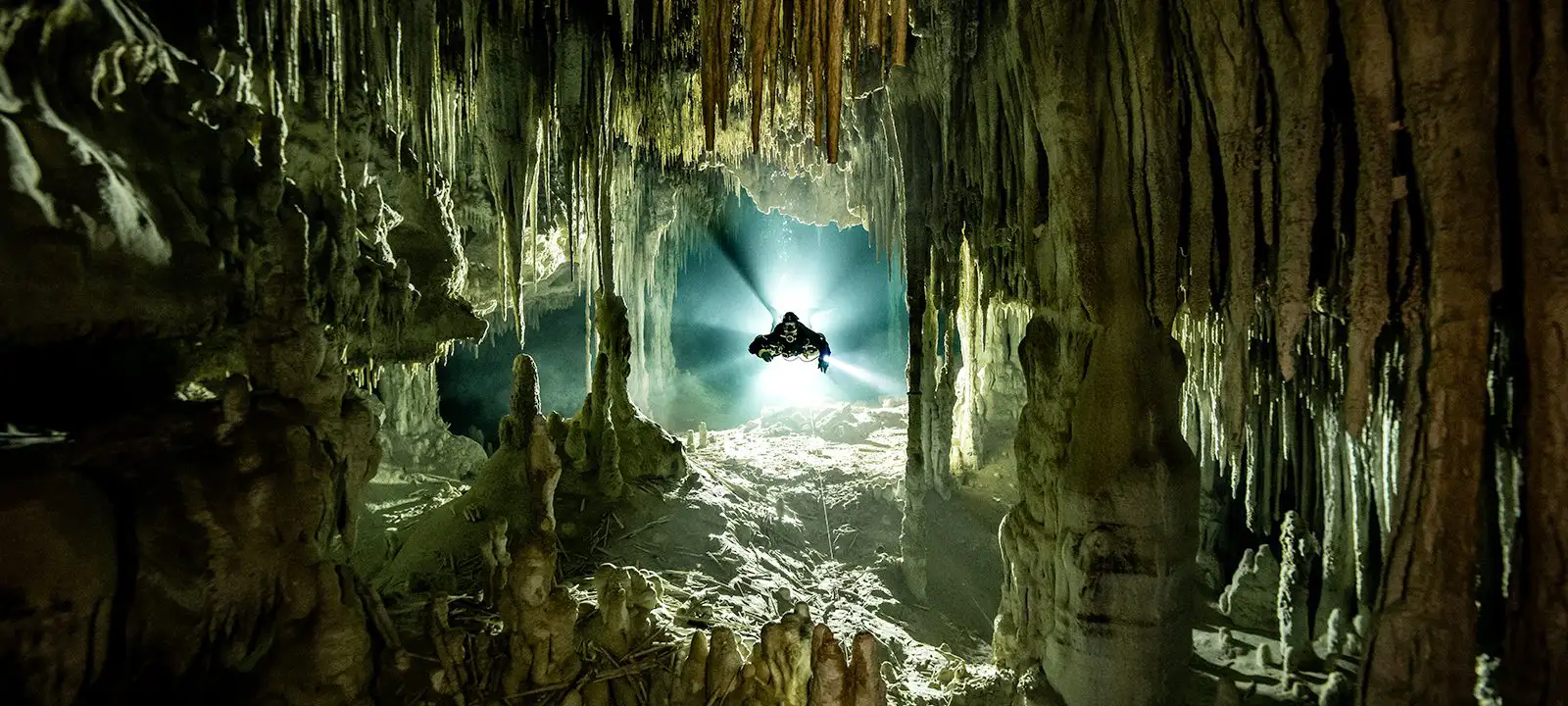
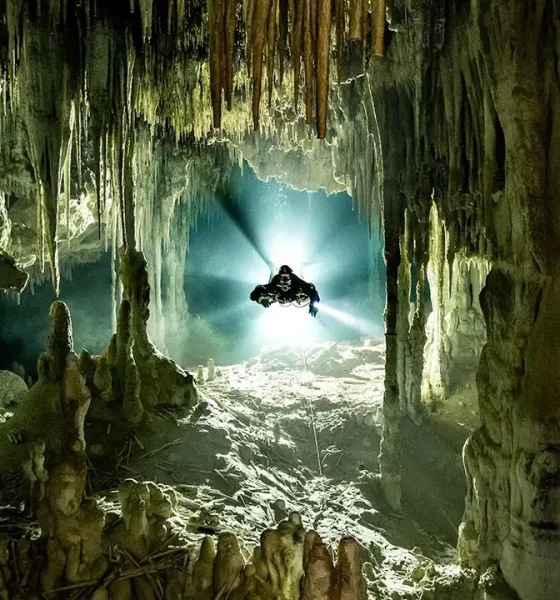
Art
Rainbow Caves
Spanish-born cave diver and underwater photographer Joram Mennes illuminates hidden karst color.
Text and images by Joram Mennes .
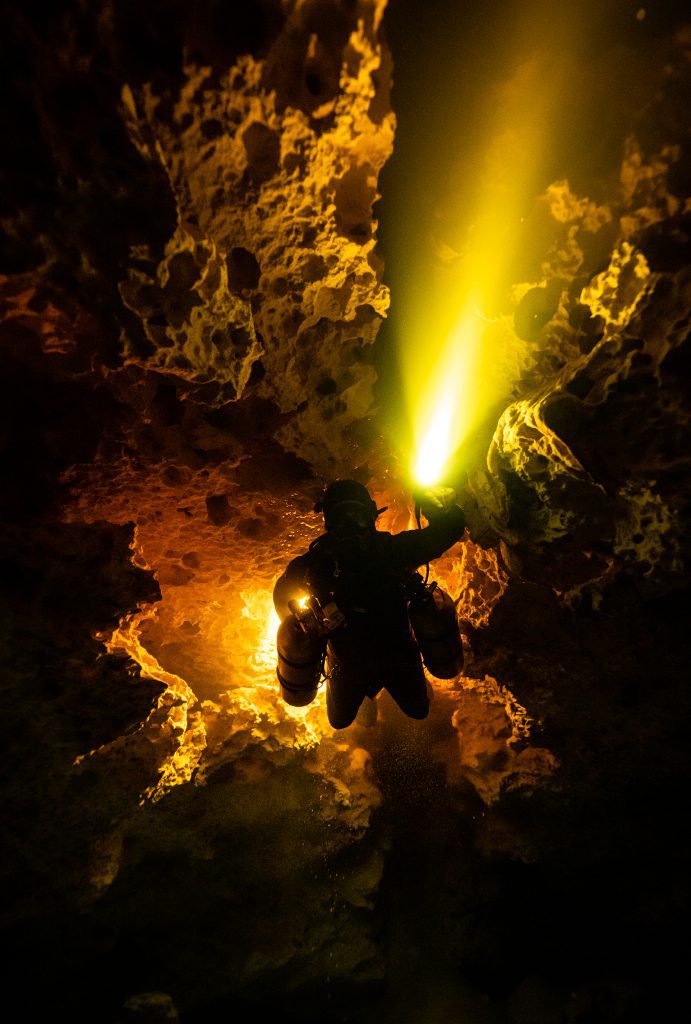
Colors are my theme; I try to bring out the colors in post-production, but also white balance on camera every dive. Caves are dark, but if you bring a ton of light and use them well, you can get some amazing RAW files. Then, in post, I do like to play with color grading and use the available editing programs to bring out the best in them.
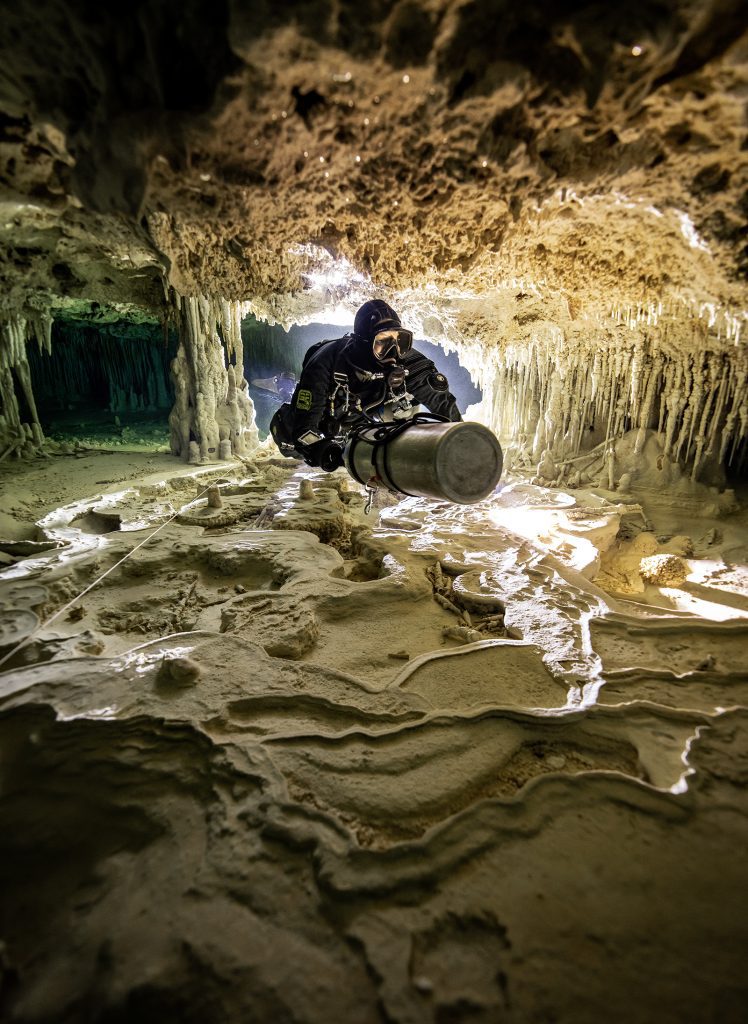
My concept is to find unique places to shoot, and try and imagine the picture before it is set up by looking at the passages and placing lights in the best possible ways for the camera to be able to capture the scene.
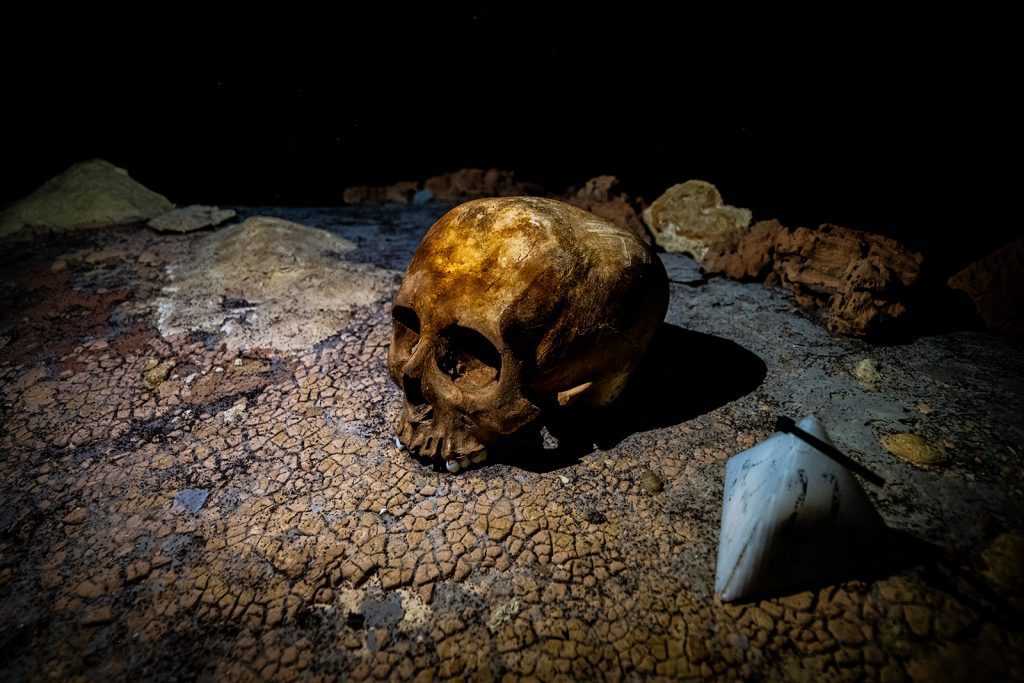

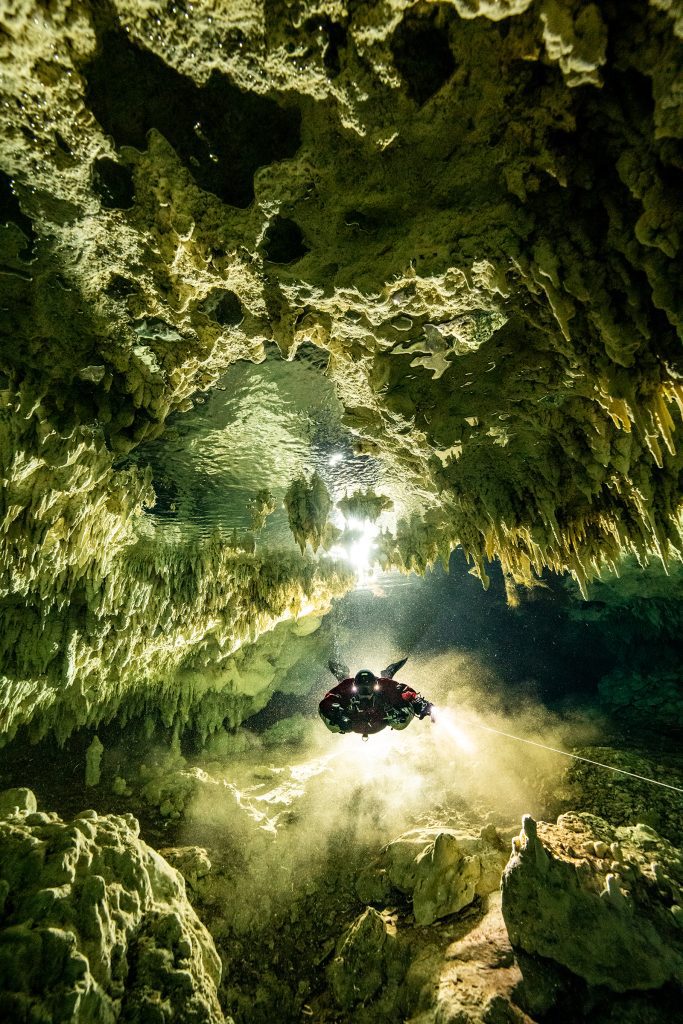
Sometimes it works; for others, I go back a second time and recreate it in a better way. Many of my photos are shot on the fly, but for some, if I’ve been there before and already have an idea about the place, I still decide angles and positioning of divers in the moment. It’s hard tasks to communicate and hoping the results come out.
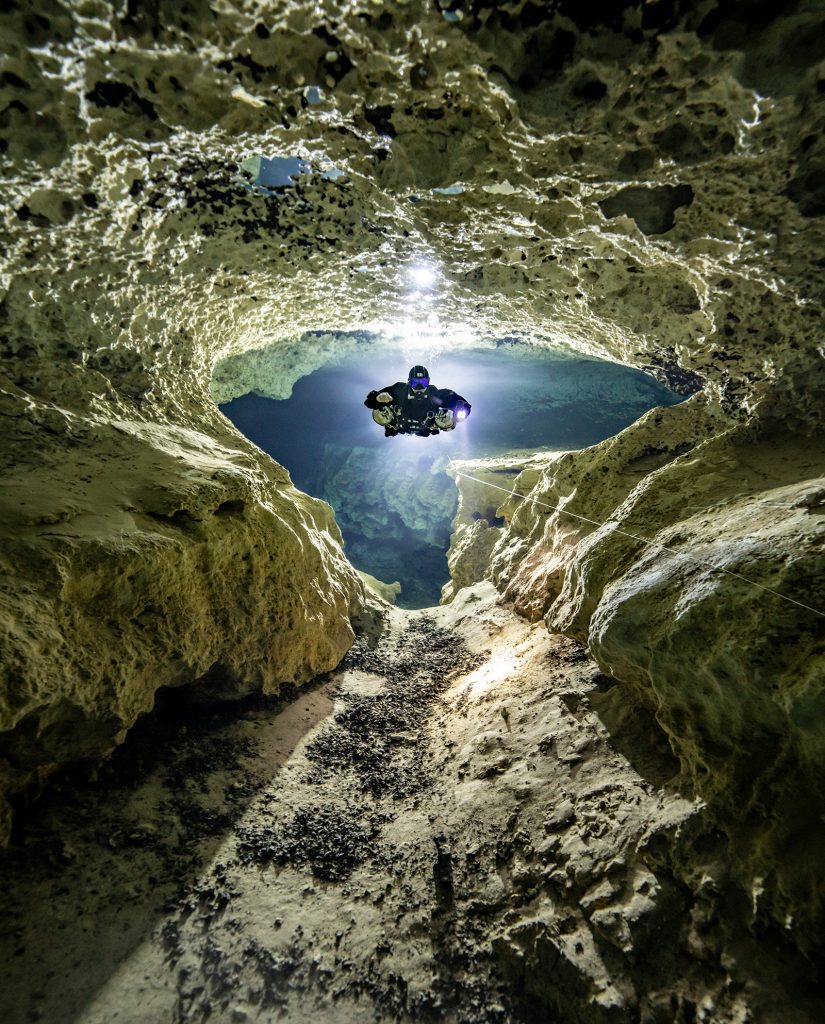
The diver gives perspective and, as such, needs to pop out. Back light helps the camera to capture light as it is facing the lens, and the diver blocks the hotspot; combining this effect adds drama and makes the eye search for the center of attention in a photo. I try to, in post, dim that point and bring out shadows to even out the image, giving the audience a sense of mystery.
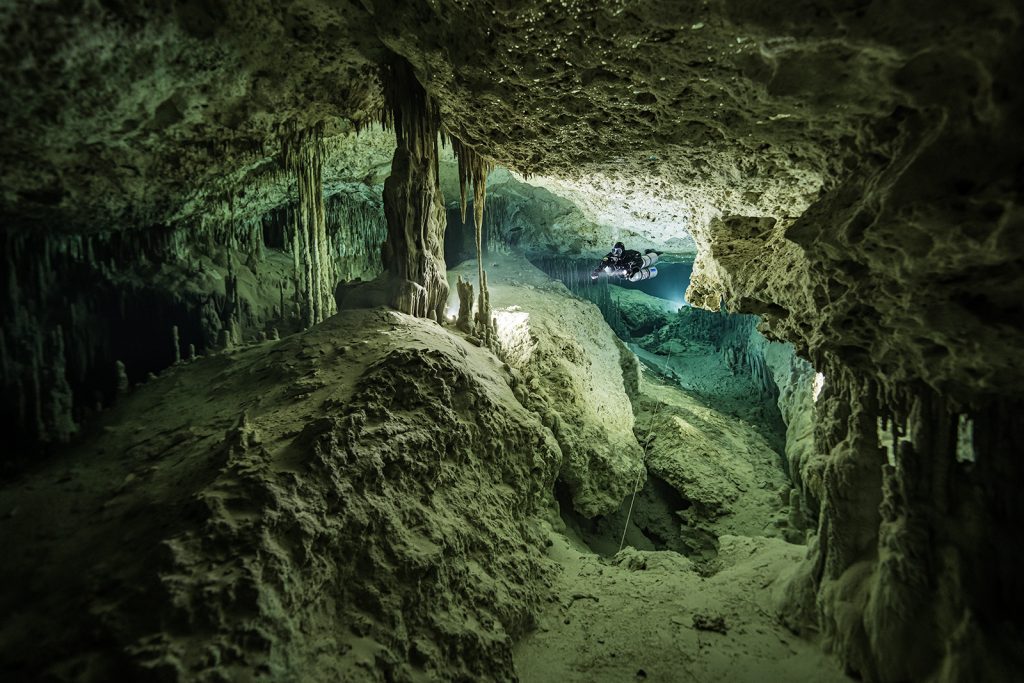

My favorite part is being down there in the caves—the whole experience of going in these amazing places and not knowing what the outcome will be. Over the years diving the Cenotes, I never stop being amazed by the natural beauty of these places, as if they’re asleep and waiting for divers to enjoy them as one swims down to these unique places. Once lit up, they seem to be alive, full of highlights, shadows, colors, and inspiring geology: They become incredibly photogenic.
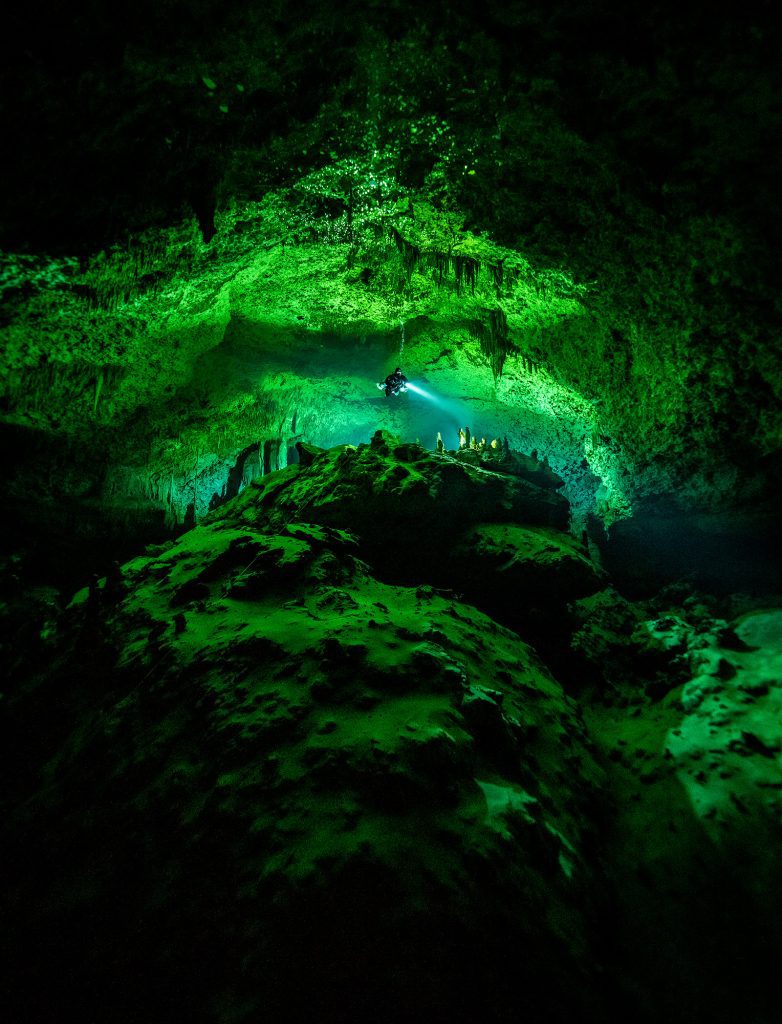
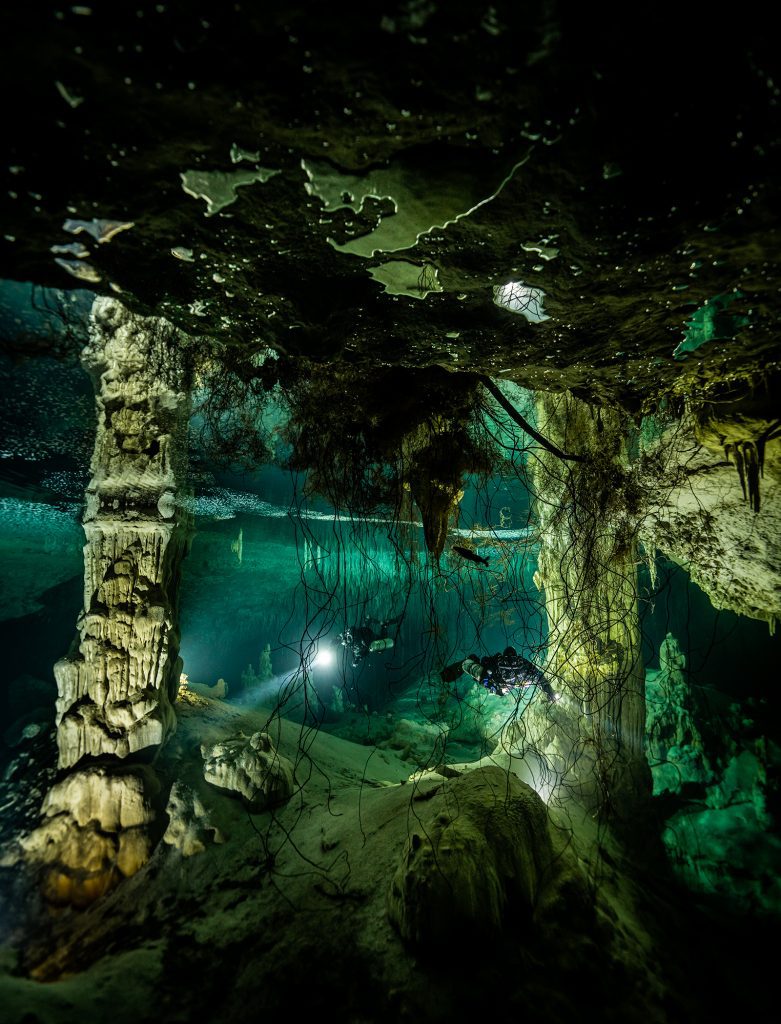
Trying to capture different and unique angles in caves with no light, is a bit of a trial and error game. Having full control of the scene and being able to place light does not make it easier—it actually means more work, more back and forth, corrections, and a bit of luck to hide the lights well. The outcome can be sometimes great; other times, well … part of the learning process.
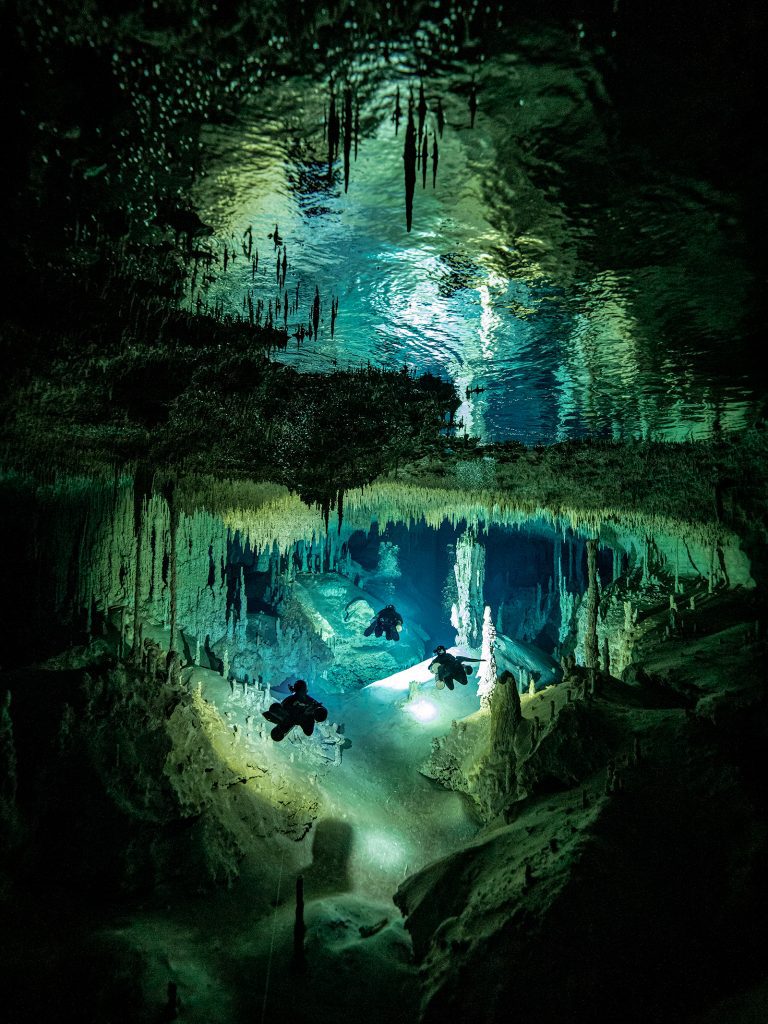
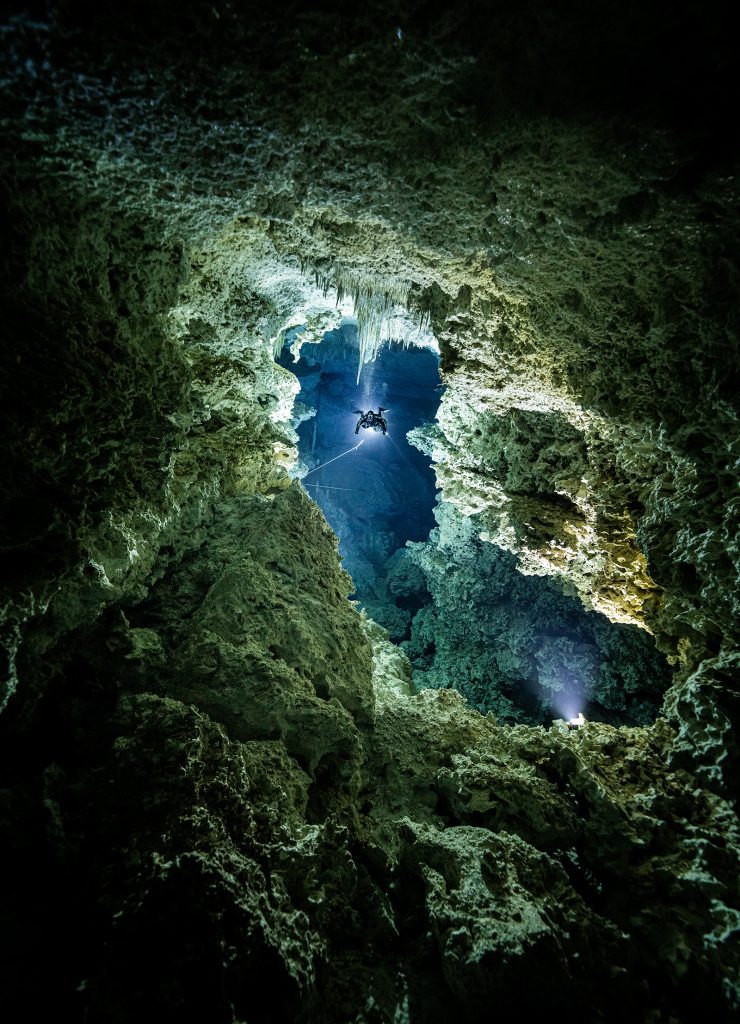
Cave diving by itself is already a challenge, and it’s not for everyone. Communication must be clear, precise, and without hesitation on a normal dive, so transmitting hand signals and positioning divers I would say is the hardest part. So prior to the dive, a long briefing must be done and, even then, nothing is obvious underwater. So mostly on a one-day photoshoot, I prefer to do two dives since, on the interval, I can advise divers about the small details to improve and try and get more creative on the second dive. The best part is every dive can be a new opportunity to create a unique image for the clients.
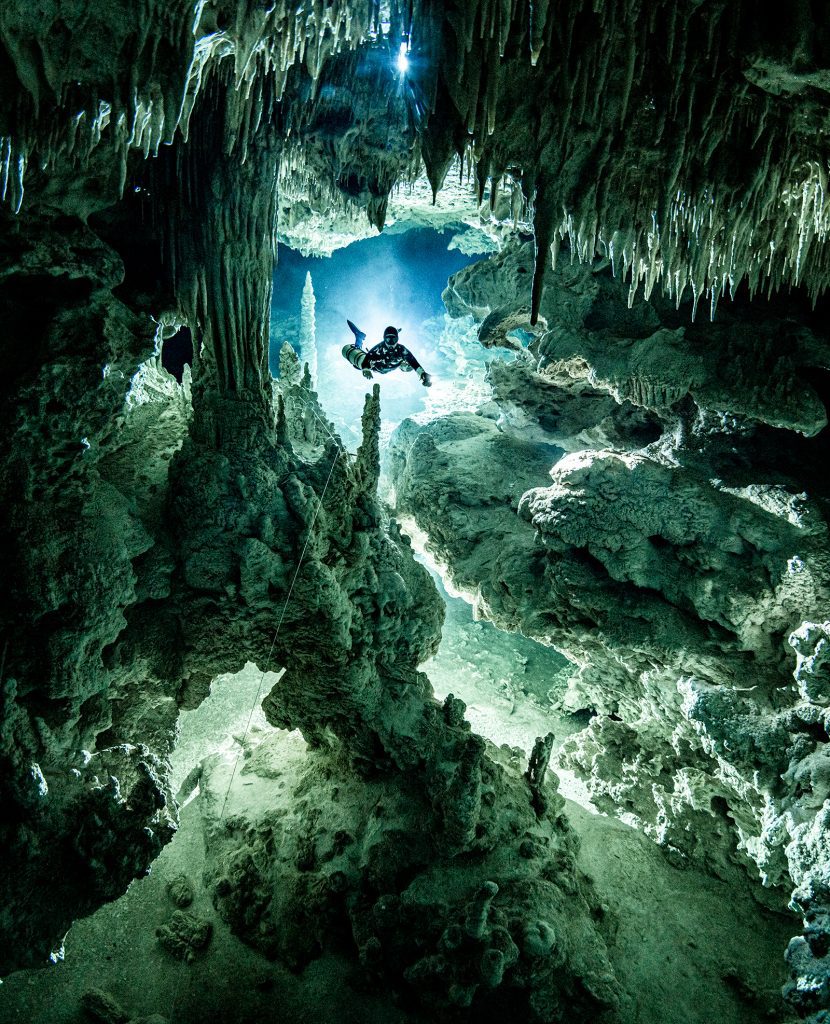
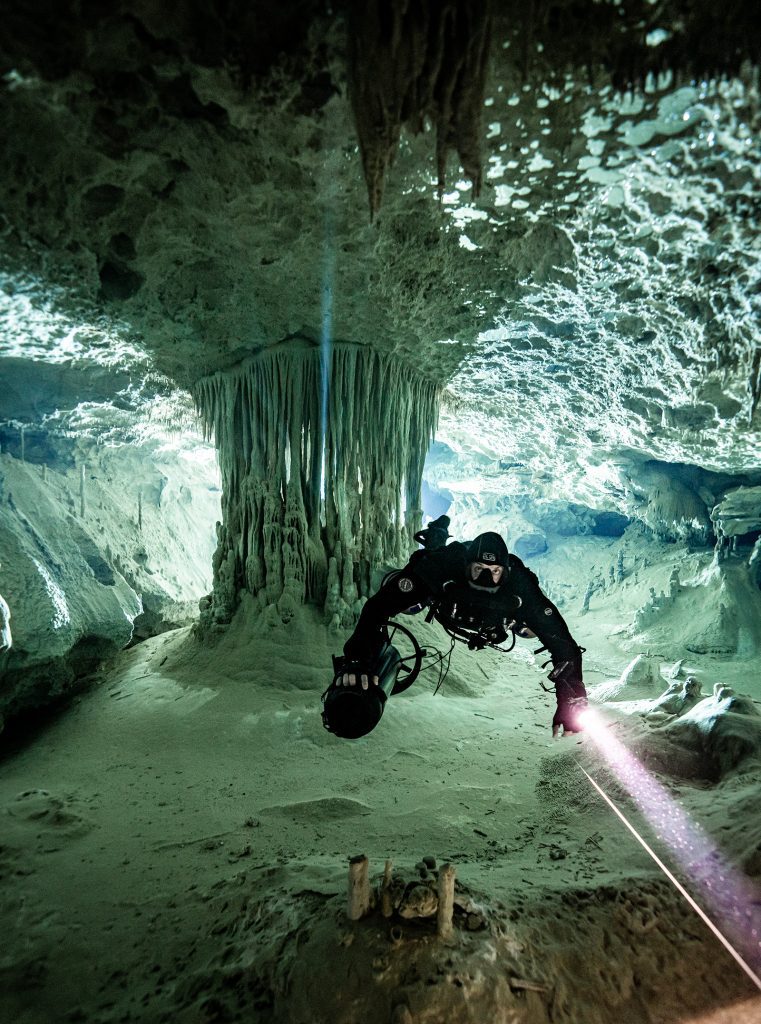
I think the hardest thing to understand about cave photography is how much time it takes to get to the places one wants to shoot at. In the world today, the newer generations seem to think everything can be done fast and that all is easy. Underestimating the background of diving, how many years are spent roaming these caves, learning about them, collecting data and being consistent about repeating paths to search for images.
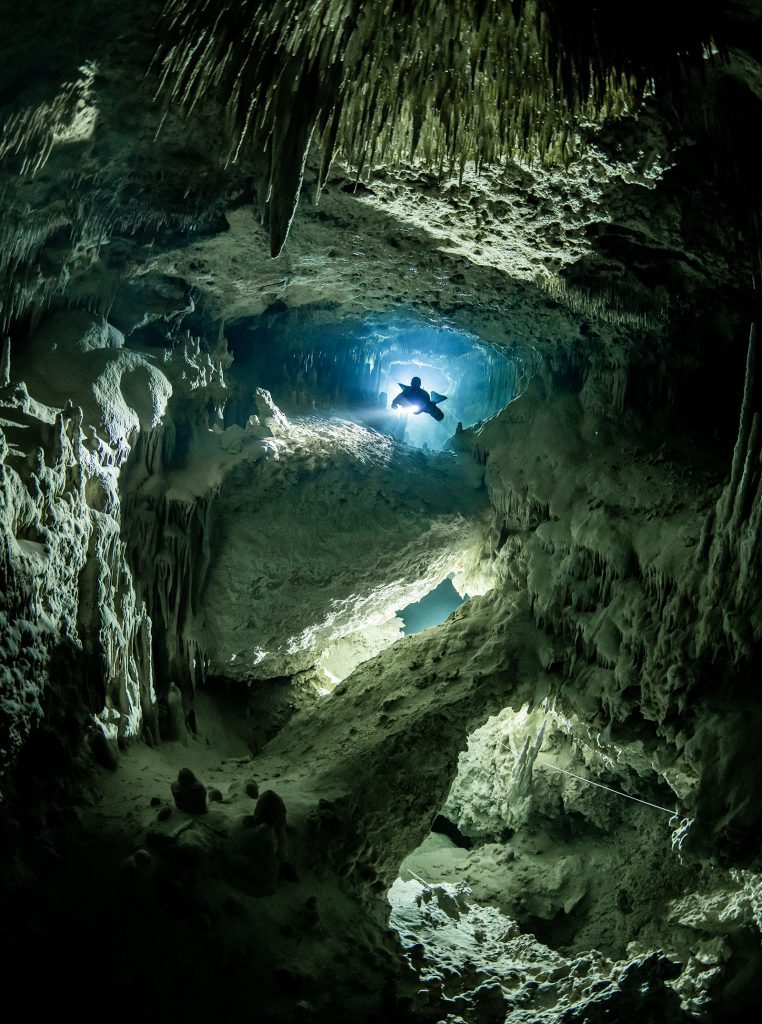

It’s really important to realize how fragile caves are. The time to take a photo is a time ticking bomb; the more you stay in a place, the more the caves suffer. A sentence a friend told me once, “The best photo is the next photo you take,” does not apply to the caves as percolation from bubbles can mean a lost image. One must stay out of frame beforehand, set up fast, think fast, and take photos as well as you can before you must move on. The more popular caves give you more time to shoot; in the more remote caves, it’s sometimes not even worth stopping and one must shoot in the moment.
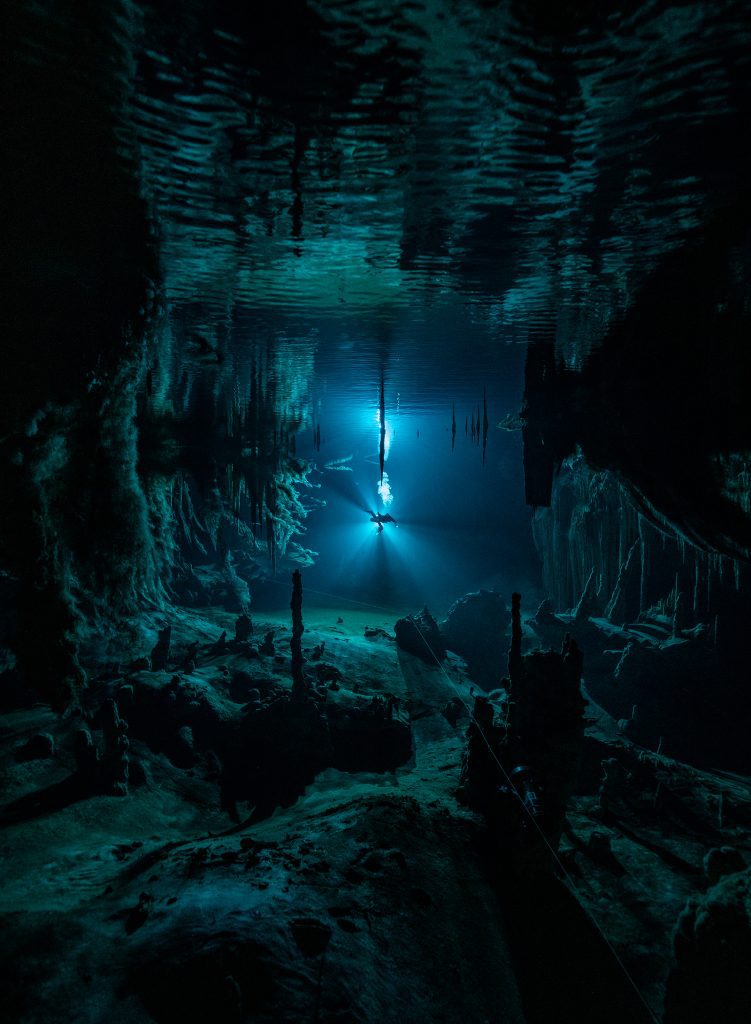
Placing the lights, I always choose the ground I will disturb the least, or if there are any marks already, use them to not make more. Approach in the most careful way, be gentle placing lights, and always see above what my bubbles can damage. Conservation of the caves is the priority when going to capture images. I was offered to go shoot in Cenote Doggy once, and declined; for me, this cave is too nice to even attempt taking photos there. I have not been there for years now, as already when swimming there all I remember is how delicate the formations were and how fast they broke with bubbles. Too delicate for me to go and disturb the peace down there.
DIVE DEEPER
www.facebook.com/Jorammennesphotography
www.instagram.com/jorammennesphotography
www.jorammennes.com
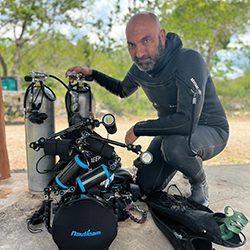
Born in Formentera, Spain in the Balearic Islands, Joram Mennes has been diving since 1998. He became an open water scuba instructor (OWSI) in 2001 and worked in Ibiza for a few years as a summer job. He moved to Tulum Mexico in 2006 where he was introduced to the cenotes, and then spent several years traveling and working in the Dominican Republic, Jamaica, Costa Rica, Panama, Trinidad and Tobago. In 2010 Joram decided to return to Playa del Carmen, Mexico and began his cave training. He picked up a DSLR camera in 2015 and began his photographic journey learning how to take photos in the cave environment and perfecting his technique. In the process he learned how to shoot amazing vistas in huge chambers and find unique places to stop and take a photo, capturing natural light, hydrogen sulfide clouds and haloclines amongst the huge speleothems. His gear includes Sony A1 with Nauticam Housing and an 8.5 Acrylic Dome, a Sony 16-35mm F2.8 Canon, and a 8-15mm Sigma 12-24mm F2.8.


















